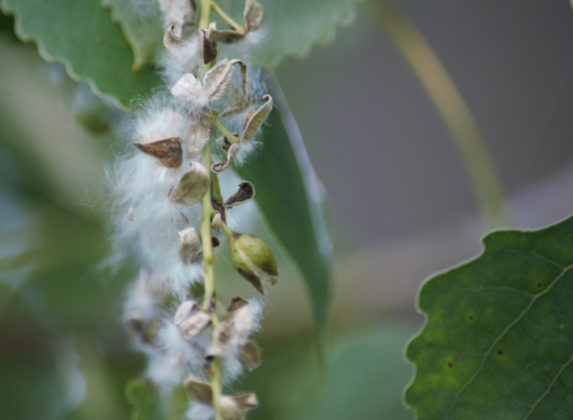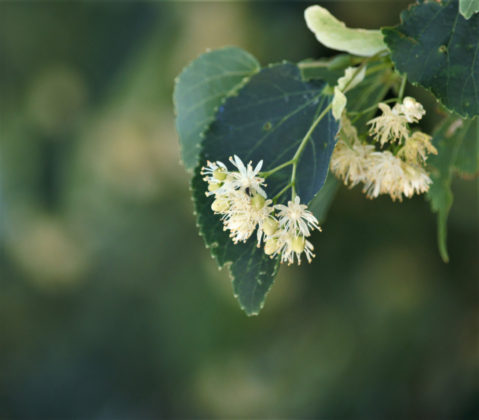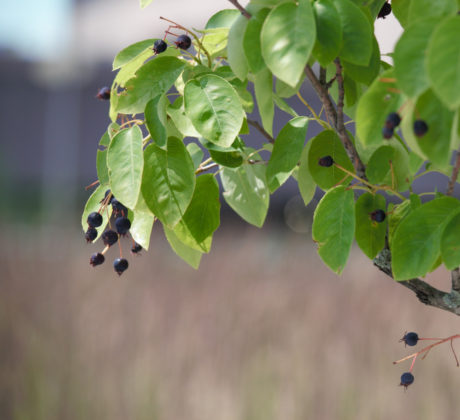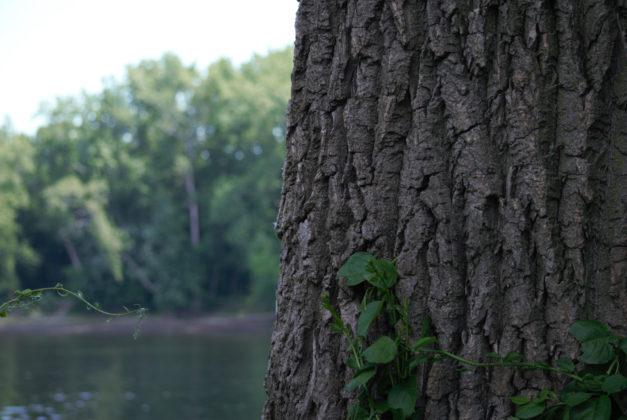Trees: They’re pretty good.
How do I know? Go outside on a hot day. Find a leafy tree. Stand under it. Trees create shade that can be 20-45° cooler than the nearby unshaded areas.
Ever notice how some streets feel hotter than others? It’s probably not your imagination. Look up to see what’s overhead. Look at all the asphalt and concrete below. When you’re out, walk through your own neighborhood, and then one that’s very different from your own. Who lives there? What are the trees like — are they large and healthy, spindly, nowhere to be found?

As you wander, you may come across a sign declaring Hartford a “Tree City.” One of these is ironically placed in an area of downtown that is far more gray than green. You’ve probably passed it going to Heaven Skate Park or Hartford Stage. To be a “Tree City” you need to have someone legally in charge of caring for the trees, a tree care ordinance (policy informs performance), a forestry program with a minimum budget, and an annual Arbor Day celebration.
Knowing that, and knowing the condition of our trees, you might have questions. Some of those can be answered by the word “drought” and others answered by knowing that Hartford, for years, did not prioritize our urban forest. We’ve been turning that around in the last few years, as you can see by more active tree care (and removal when necessary). (Our city forester is a total badass, by the way) But we can’t take this for granted, and every year when the budget is discussed we have another opportunity to remind our elected officials about our values.

This image is from the @CapitalForestCT Facebook page, showing a fabulous tulip tree in the Old North Cemetery.
Where are the trees?
Parks. All our large parks — Bushnell, Colt, Elizabeth, Goodwin, Keney, Pope, and Riverside have gorgeous, old trees.
Cemeteries. Cedar Hill Cemetery gets a lot of love, and for good reason, but don’t sleep on Zion Hill Cemetery or Spring Grove Cemetery. The combination of many trees and very little pavement makes graveyards cooler places in the summer.
Academic and other campuses. Trinity College may be a private institution, but the public is allowed on its grounds. The Institute of Living has Notable Trees that the public can visit during normal business hours. Those museums and other cultural institutions? Go visit. There is no fee for exploring the grounds. Trees at the Burns School in Frog Hollow (and elsewhere) have been tapped and maple syrup produced from them!
Plazas, along our streets, and yards. These may be less impressive in size, but don’t ignore what you might pass by daily. The image below is of a Linden. The one following that is a Juneberry. Our streets have apple and plum trees that you never see unless you start looking.
How do you know what’s what?
The library has books that can help with this, but there are apps. LeafSnap is one where you can take a pic or pull one off your phone, and find out what kind of tree or flower you’re looking at. While you’re out, maybe you come across something that might be right at home on your block — contact KNOX to see if they can help.

Their shade-giving properties would be enough, but trees also reduce the effects of climate change. There’s plenty they do between helping personal comfort and helping to sustain our habitat. In the middle, trees help to mitigate some of the impacts of toxic facilities that are interestingly not placed in wealthy communities.

Staying Safe
Don’t get smacked by falling tree limbs! Look up to see if there are any broken branches and shift your path, especially on windy days, if you notice anything that might land on your head. If there is a tree that looks menacing, call 311 or use that app to report it to the city forester. (You can also use the app for reporting tree pits — those metal grills around street trees — that have become tripping hazards or if you feel like requesting a tree be added in a place where there’s no shade)



Tony C
The city has about 25% tree canopy coverage. The city’s tree plan has us aiming for 35% tree canopy by 2035. That would be a step in the right direction, and closer to New Haven’s current tree canopy. http://www.hartford.gov/images/DPW/Forestry/2019HartfordTree_Plan.pdf